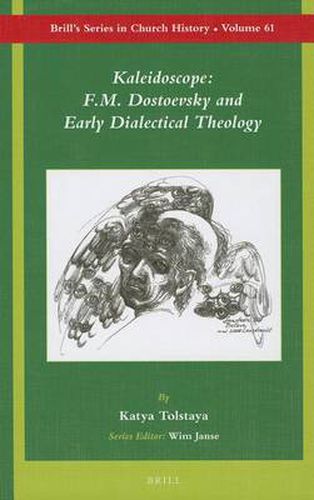Readings Newsletter
Become a Readings Member to make your shopping experience even easier.
Sign in or sign up for free!
You’re not far away from qualifying for FREE standard shipping within Australia
You’ve qualified for FREE standard shipping within Australia
The cart is loading…






Introducing a new hermeneutics, this book explores the correlation between the personal faith of F.M. Dostoevsky (1821-1881) and the religious quality of his texts. In offering the first comprehensive analysis of his ego documents, it demonstrates how faith has methodologically to be defined by the inaccessibility of the ‘living person’. This thesis, which draws on the work of M.M. Bakhtin, is further developed by critically examining the reception of Dostoevsky by the two main representatives of early dialectical theology, Karl Barth and Eduard Thurneysen. In the early 1920s, they claimed Dostoevsky as a chief witness to their radical theology of the fully transcendent God. While previously unpublished archive materials demonstrate the theological problems of their static conceptual interpretation, the ‘kaleidoscopic’ hermeneutics is founded on the awareness that a text offers only a fixed image, whereas living faith is in permanent motion.
$9.00 standard shipping within Australia
FREE standard shipping within Australia for orders over $100.00
Express & International shipping calculated at checkout
Stock availability can be subject to change without notice. We recommend calling the shop or contacting our online team to check availability of low stock items. Please see our Shopping Online page for more details.
Introducing a new hermeneutics, this book explores the correlation between the personal faith of F.M. Dostoevsky (1821-1881) and the religious quality of his texts. In offering the first comprehensive analysis of his ego documents, it demonstrates how faith has methodologically to be defined by the inaccessibility of the ‘living person’. This thesis, which draws on the work of M.M. Bakhtin, is further developed by critically examining the reception of Dostoevsky by the two main representatives of early dialectical theology, Karl Barth and Eduard Thurneysen. In the early 1920s, they claimed Dostoevsky as a chief witness to their radical theology of the fully transcendent God. While previously unpublished archive materials demonstrate the theological problems of their static conceptual interpretation, the ‘kaleidoscopic’ hermeneutics is founded on the awareness that a text offers only a fixed image, whereas living faith is in permanent motion.